NVIDIA and EVGA GeForce GTX 650 Ti BOOST Video Card Review
Overclocking The GeForce 650 Ti Boost GPU
We installed the EVGA Precision X 4.0.0 software utility to overclock both the EVGA GeForce GTX 650 Ti Boost Superclocked video card. We didn’t overclock the NVIDIA GeForce GTX 650 Ti Boost since we had the retail version by EVGA available for testing.
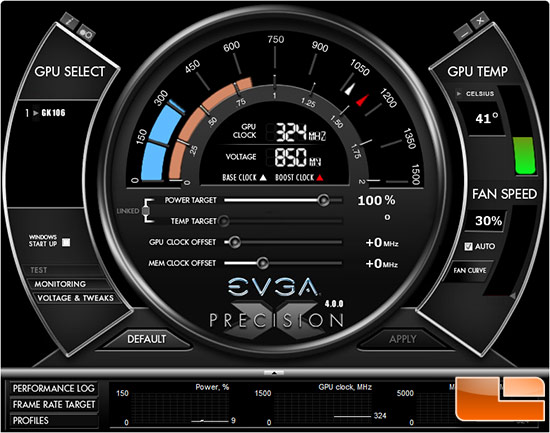
EVGA Precision X v4.0.0 does not let you adjust the temp target, but you can adjust the power target, GPU Clock Offset and the Memory clock offset within a certain range.
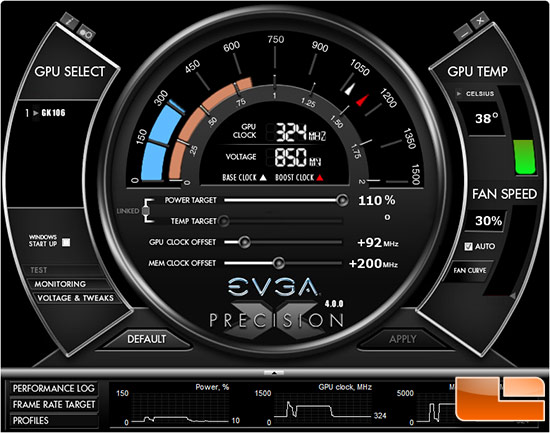
After spending an afternoon overclocking the EVGA GeForce GTX 650 Ti Boost SC we were able to adjust the GPU clock offset by 92MHz and the memory clock offset by 200MHz. We also bumped up the power target to 110% and left the fan on auto.
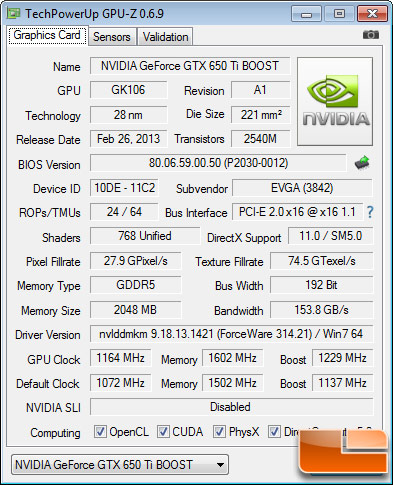

With the GPU offset increased by +92 MHz we found the card often boosting up to 1306.5MHz on the core, which is impressive for a sub $170 mainstream gaming desktop graphics card. The 2GB of GDDR5 memory was running at 1603.1MHz (6412.4 MHz Effective).
EVGA GeForce GTX 650 Ti Boost Superclocked w/ 1072MHz Core & 1502MHz Memory:
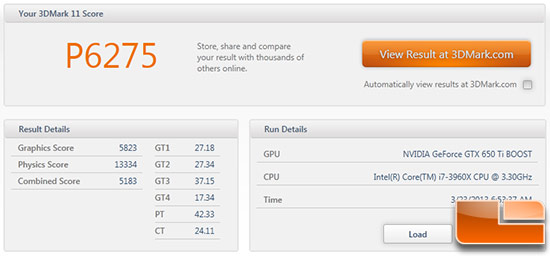
EVGA GeForce GTX 650 Ti Boost Superclocked w/ 1164MHz Core & 1602MHz Memory:
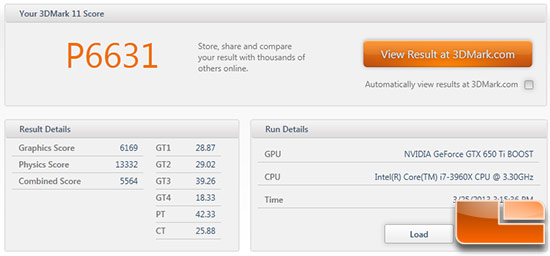
With this overclock we were able to hit ~P6631 on 3DMark 11 with the performance preset, which is a nice increase from ~P6275! This is a around a 356 point increase in our score, which is a 5.7% improvement in performance over the cards already overclocked speeds!
The NVIDIA GeForce GTX 650 Ti Boost video card uses the GK106 ‘Kepler’ GPU and it looks like it has some overclocking headroom and it was very easy to tap into the overhead thanks to EVGA Precision X!

Comments are closed.